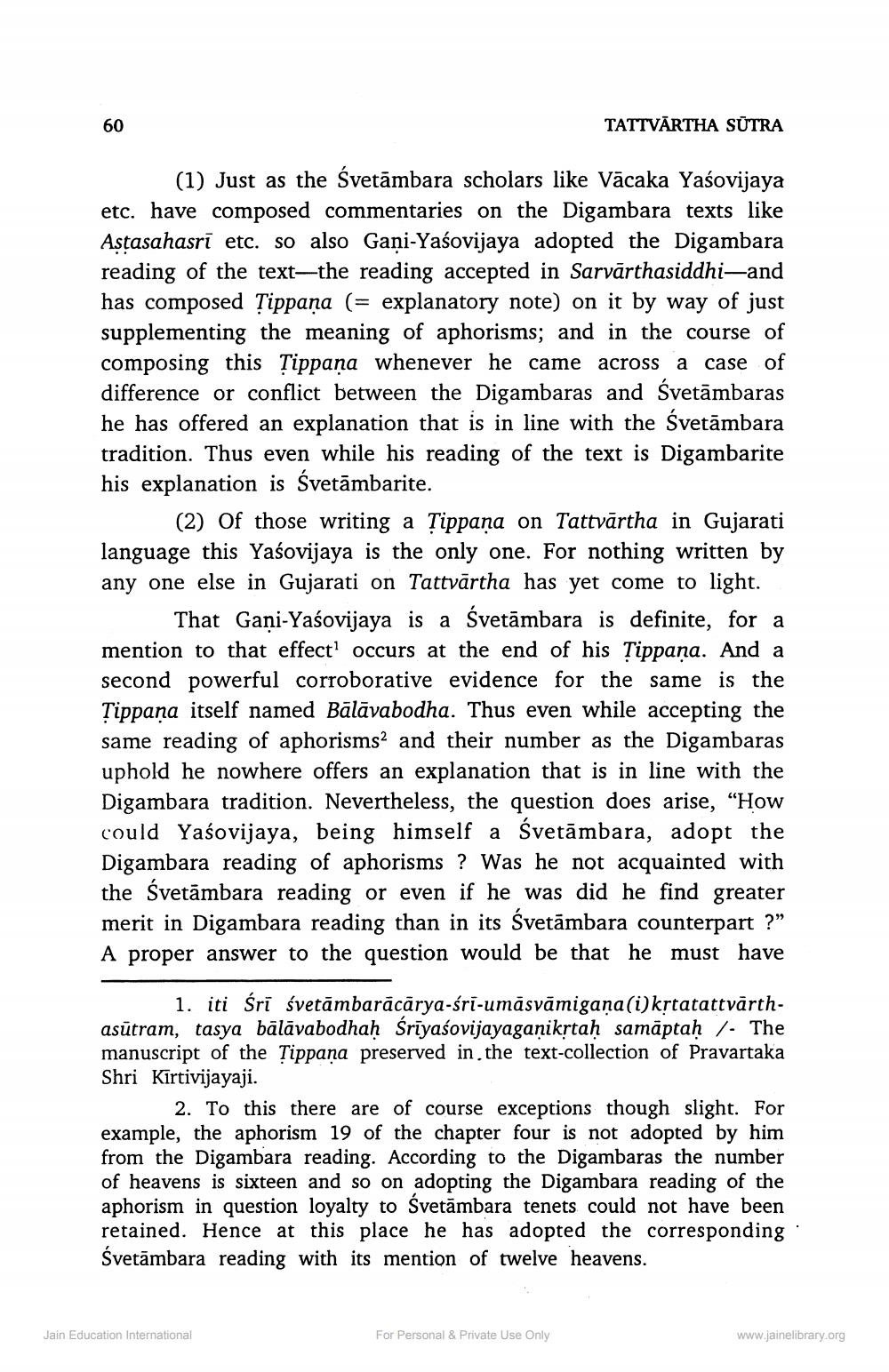________________
60
TATTVĀRTHA SUTRA
(1) Just as the Śvetāmbara scholars like Vācaka Yaśovijaya etc. have composed commentaries on the Digambara texts like Astasahasri etc. so also Gani-Yaśovijaya adopted the Digambara reading of the text-the reading accepted in Sarvārthasiddhi—and has composed Tippaña (= explanatory note) on it by way of just supplementing the meaning of aphorisms; and in the course of composing this Tippaņa whenever he came across a case of difference or conflict between the Digambaras and Svetāmbaras he has offered an explanation that is in line with the Svetāmbara tradition. Thus even while his reading of the text is Digambarite his explanation is Śvetāmbarite.
(2) Of those writing a Tippana on Tattvārtha in Gujarati language this Yaśovijaya is the only one. For nothing written by any one else in Gujarati on Tattvārtha has yet come to light.
That Gani-Yaśovijaya is a “vetāmbara is definite, for a mention to that effect occurs at the end of his Tippana. And a second powerful corroborative evidence for the same is the Tippana itself named Bālāvabodha. Thus even while accepting the same reading of aphorisms2 and their number as the Digambaras uphold he nowhere offers an explanation that is in line with the Digambara tradition. Nevertheless, the question does arise, “How could Yaśovijaya, being himself a Svetāmbara, adopt the Digambara reading of aphorisms ? Was he not acquainted with the Śvetāmbara reading or even if he was did he find greater merit in Digambara reading than in its Śvetāmbara counterpart ?” A proper answer to the question would be that he must have
1. iti Śrī śvetāmbarācārya-śri-umāsvāmigana(i)kstatattvārthasūtram, tasya bālāvabodhah Srīyasovijayaganikrtah samāptah/. The manuscript of the Tippana preserved in the text-collection of Pravartaka Shri Kirtivijayaji.
2. To this there are of course exceptions though slight. For example, the aphorism 19 of the chapter four is not adopted by him from the Digambara reading. According to the Digambaras the number of heavens is sixteen and so on adopting the Digambara reading of the aphorism in question loyalty to Svetāmbara tenets could not have been retained. Hence at this place he has adopted the corresponding Svetāmbara reading with its mention of twelve heavens.
Jain Education International
For Personal & Private Use Only
www.jainelibrary.org




